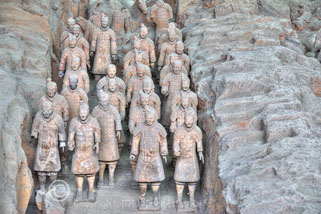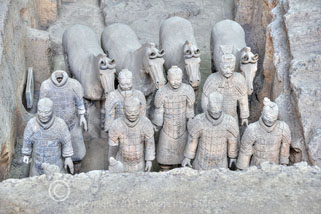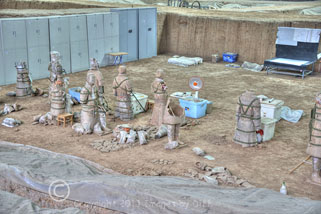Terracotta Warriors

click photo to enlarge

click photo to enlarge

click photo to enlarge
We visited many ancient places like the Great Wall and the Forbidden City but the warriors was one of the more fascinating things for me. How many thousands of people must have been used to build the warriors, dig the trenches for them, then place them in these pits. The same thing with the Great Wall and we are talking BC where everything was pretty much done by hand.

click photo to enlarge

click photo to enlarge